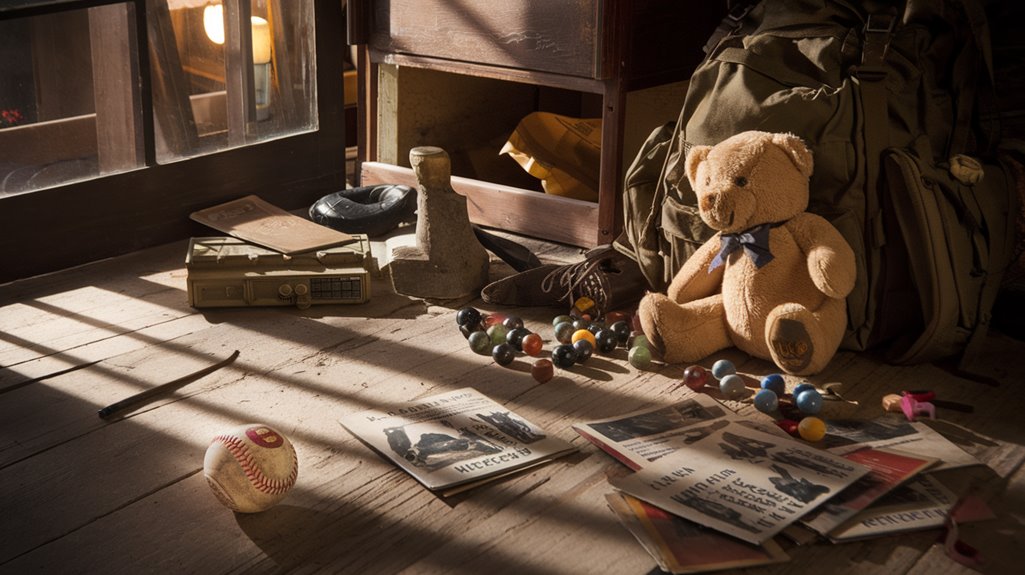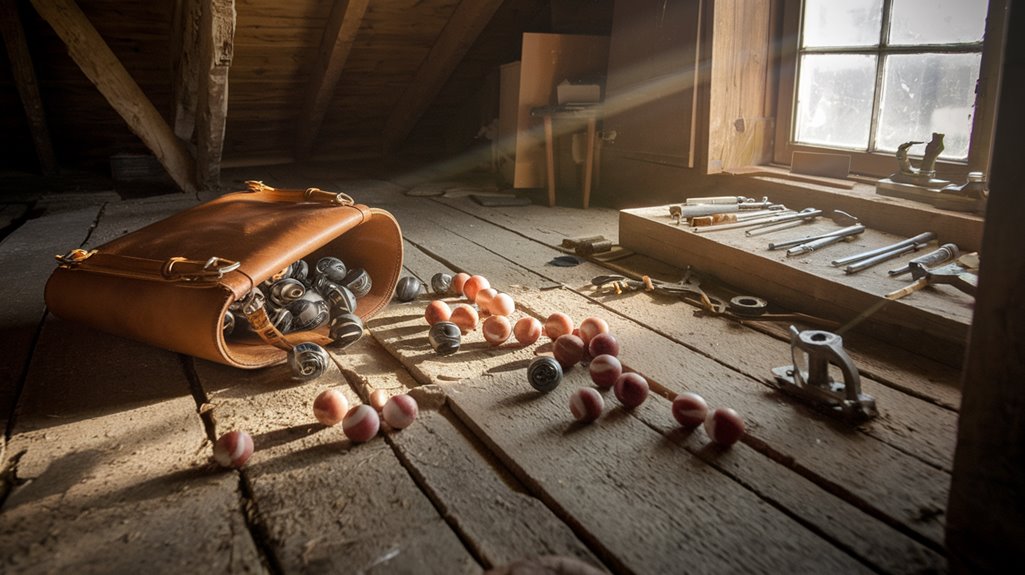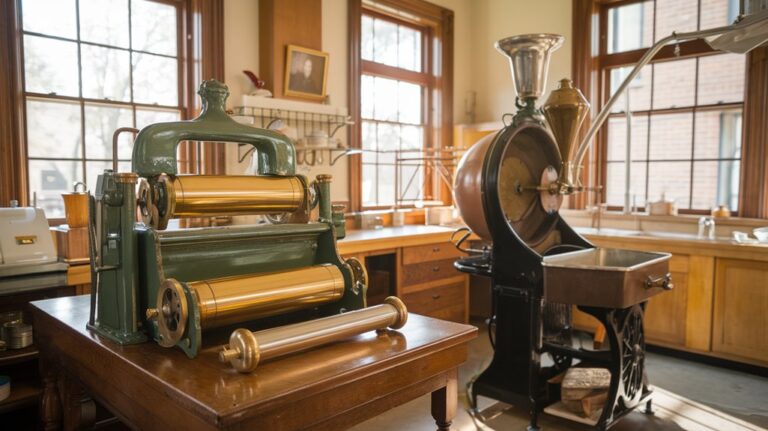Child Saboteurs: How Kids Helped Resist the Nazis
Picture Hans Fischer, age thirteen, carefully sliding anti-Nazi leaflets into his neighbors' mailboxes under the cover of darkness in 1943 Berlin. You might wonder what drives a child to risk everything in the face of such danger. While history often focuses on adult resistance fighters during World War II, countless young people like Hans played crucial roles in undermining the Nazi regime. Their stories of courage, from elaborate sabotage operations to small daily acts of defiance, reveal an overlooked chapter of wartime resistance.
The Rise of Youth Resistance Groups

While the Nazi regime sought to control German youth through mandatory Hitler Youth membership, numerous resistance groups emerged in response to this oppression. You'll find that several motivation factors drove young people to join these underground movements, including their fierce rejection of Nazi ideology and their desire to preserve personal independence.
Cultural influences played a significant role in shaping youth resistance. Groups like the Swing Youth embraced banned jazz music and English culture as a form of rebellion, while the Edelweiss Pirates actively opposed Hitler Youth's intimidation tactics. The Edelweiss Pirates focused their efforts on conducting weekend camping trips to build solidarity among members. By 1936, ninety-seven percent of teachers had joined the Nazi Teachers League, making schools a primary source of oppression that fueled youth resistance.
When the Nazis banned nearly all independent youth organizations, they inadvertently created a powerful catalyst for resistance. Young people found themselves fighting not just for their freedom of association, but for their right to maintain their own identities outside the Reich's suffocating control.
Secret Networks and Underground Operations
Throughout occupied Europe, young resistance fighters established intricate underground networks that proved crucial to sabotaging Nazi operations. Using hidden communications like coded messages and strategic graffiti, they orchestrated widespread distribution of anti-Nazi leaflets across cities and towns, making it difficult for the Gestapo to track their true numbers and locations.
Their covert strategies included forming secret committees within concentration camps, where they worked tirelessly to protect child inmates from execution. In Buchenwald, political prisoner kapos organized multilingual groups to maintain camp cohesion and preserve lives. The brave actions of resistors like Sophie Scholl, who helped create and distribute White Rose pamphlets, demonstrated the power of youth-led resistance movements.
You'd find these young resistors writing powerful slogans on walls, spreading critical information through pamphlets, and coordinating with other resistance groups to maximize their impact.
Despite facing severe consequences, including torture and death if caught, they maintained their underground operations, saving hundreds of lives and inspiring others to join the fight against Nazi oppression.
Daily Acts of Defiance
The daily defiance of young resistance fighters took countless forms, from distributing banned literature to performing daring acts of sabotage.
You'd find children smuggling food through ghetto walls, sharing clandestine communication through underground networks, and even derailing Nazi supply trains. Their creative expression through art, diaries, and letters served as powerful weapons against oppression. The bravery of Kindertransport evacuees helped save thousands of Jewish children from certain death. Partisan teenagers cared for wounded soldiers while dodging bullets during intense battles.
- Distributing illegal newspapers and leaflets to spread truth and maintain hope
- Trading personal belongings for medicine and essential supplies
- Creating false identity papers to help others escape
- Documenting atrocities through secret diaries and artwork
These brave young resistors risked everything to fight back.
While some joined partisan groups to carry out direct sabotage, others maintained their humanity through smaller but equally significant acts of defiance, like teaching younger children or preserving their cultural heritage through art and storytelling.
The Price of Courage: Risks and Consequences
Young resistors paid a devastating price for their courage, as Soviet forces arrested and imprisoned thousands of youths branded as "Werwolves" in the aftermath of World War II.
If you were between 15 and 17 years old, you'd face arbitrary arrest based on mere accusations. The youth trauma was severe – half of the 10,000 young people sent to NKVD special camps never returned home.
Some of these young people had previously smuggled food and supplies into ghettos to help those in need. Most recruits came from the Hitler Youth ranks and were trained in guerrilla warfare techniques.
The societal impact reached far beyond individual families. You wouldn't know where your child was taken if they were arrested, as authorities denied information to parents.
In Saxony alone, they "liquidated" 92 groups with nearly 1,200 members. The East German regime later used these events to justify further repression, creating a climate of fear that would haunt communities for generations to come.
Notable Young Heroes and Their Stories

Several remarkable stories of youthful resistance emerged during World War II, showcasing extraordinary courage in the face of Nazi oppression.
Youth mobilization against the Nazi regime took various forms, from the White Rose movement's intellectual resistance to the Edelweiss Pirates' direct confrontations with Hitler Youth. The White Rose members spread their message by distributing leaflets to middle-class citizens found in telephone books.
- Sophie Scholl distributed anti-Nazi leaflets until her execution at age 21
- Motele Schlein, a young violinist, used his musical talents as cover to gather intelligence and bomb Nazi officers
- The Edelweiss Pirates ambushed Hitler Youth patrols and helped Allied forces
- Young resisters often paid the ultimate price for their bravery
These resistance strategies demonstrated that even the youngest members of society could challenge tyranny. At just 14 years old, Motele gave his life during intense fighting with Nazis.
What began as participation in Nazi youth organizations often transformed into active opposition as young people witnessed the regime's true nature.
Legacy of Child Resistance Fighters
Decades after World War II ended, stories of child resistance fighters continue to inspire and educate new generations about courage in the face of tyranny.
Their impact assessment reveals how young resisters, like the Edelweiss Pirates and White Rose members, helped destabilize Nazi control through sabotage, propaganda, and escape networks.
Today, you'll find educational initiatives across Europe and beyond that honor these brave youth. The Swing Youth's defiant stance through secret dance clubs demonstrated that even cultural resistance could challenge Nazi control.
Munich's White Rose memorials and the JFCS Holocaust Center's curriculum use survivors' stories and primary sources to teach students about resistance and moral courage.
These programs help you understand how children weren't just passive victims – they were active fighters against oppression. The remarkable Oversteegen sisters proved this by engaging in lethal missions against Nazi officers despite their young ages.
Their legacy reminds you that age doesn't limit your ability to stand up for what's right, inspiring contemporary movements against injustice and discrimination.










